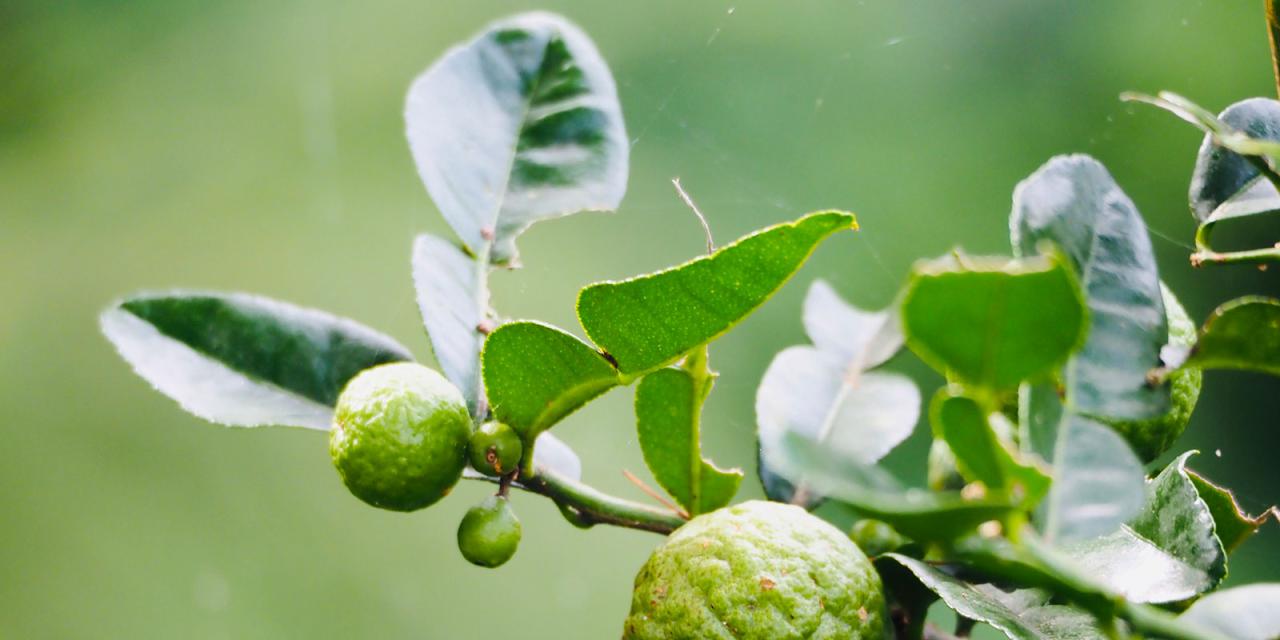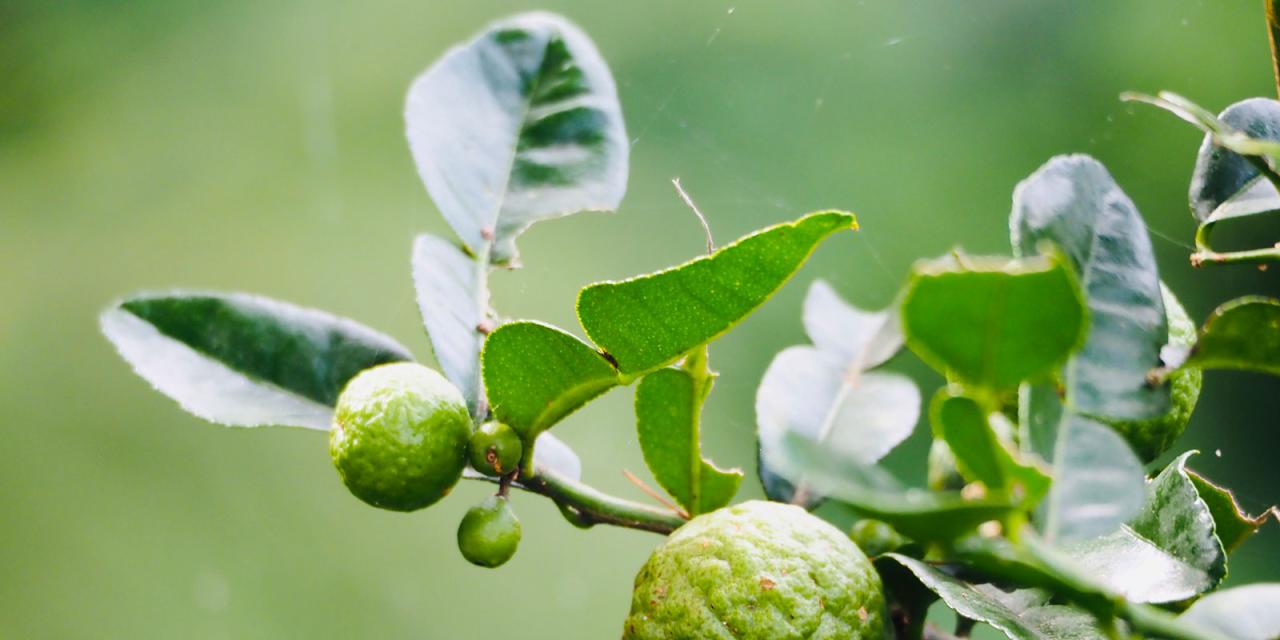How to Get the Most Out of Kaffir Lime Leaf: Essential Tips for Delicious Results – The fragrant, citrusy aroma of kaffir lime leaves is a hallmark of Southeast Asian cuisine, adding a unique depth and complexity to dishes.
But beyond their distinctive flavor, these leaves offer a world of culinary possibilities, from vibrant curries to refreshing drinks. This guide delves into the secrets of using kaffir lime leaves, providing practical tips and insights to elevate your cooking to new heights.
From sourcing and storage to preparation and culinary applications, we’ll explore the intricacies of working with this versatile ingredient. Whether you’re a seasoned chef or a home cook venturing into new flavors, this comprehensive guide will empower you to unlock the full potential of kaffir lime leaves, transforming your dishes into culinary masterpieces.
Understanding Kaffir Lime Leaf
Kaffir lime leaf, also known as makrut lime leaf, is a staple ingredient in Southeast Asian cuisine, renowned for its unique aroma and flavor. The leaves possess a distinct citrusy fragrance, combined with a subtle, slightly bitter taste that adds a refreshing and complex dimension to dishes.
Kaffir Lime Leaf Characteristics
Kaffir lime leaves are characterized by their distinctive, deeply lobed shape, resembling a pair of hands clasped together. They are typically used whole or torn into pieces, as they are too tough to be eaten whole. Their aroma is intensely citrusy, with notes of lemon, lime, and a hint of mint, while the flavor is slightly bitter and pungent.
Culinary Uses of Kaffir Lime Leaf
Kaffir lime leaves are a versatile ingredient that can be used in various ways in cooking. They are commonly added to soups, curries, stir-fries, and marinades, where their aroma and flavor infuse the dish.
Common Applications
- Soups and Curries:Kaffir lime leaves are often added to Thai, Vietnamese, and Indonesian soups and curries, where they contribute a distinctive citrusy aroma and flavor. Examples include Tom Kha Gai (Thai coconut soup), Laksa (Malaysian noodle soup), and Rendang (Indonesian beef curry).
- Stir-fries:Kaffir lime leaves are commonly used in stir-fries, where they add a refreshing and aromatic element to the dish. They are often combined with other herbs and spices, such as lemongrass, galangal, and chili peppers.
- Marinades:Kaffir lime leaves can be used in marinades for meat, poultry, and fish, adding a citrusy and fragrant flavor to the dish. They are often combined with other ingredients like soy sauce, fish sauce, and garlic.
- Infused Oils and Butters:Kaffir lime leaves can be infused into oils and butters, which can be used to flavor dishes or as a finishing touch. Infused oil can be used in stir-fries, while infused butter can be added to pasta dishes or grilled vegetables.
- Desserts:While less common, kaffir lime leaves can also be used in desserts, such as cakes, cookies, and ice cream, adding a unique citrusy twist.
Popular Dishes Featuring Kaffir Lime Leaf, How to Get the Most Out of Kaffir Lime Leaf: Essential Tips for Delicious Results
- Tom Yum Soup (Thai):A spicy and sour soup, often made with shrimp, mushrooms, and lemongrass, where kaffir lime leaves contribute a citrusy aroma and a refreshing flavor.
- Green Curry (Thai):A rich and creamy curry, usually made with coconut milk, green chilies, and vegetables, where kaffir lime leaves add a distinctive citrusy aroma and a slightly bitter flavor.
- Massaman Curry (Thai):A mild and aromatic curry, often made with chicken, potatoes, and peanuts, where kaffir lime leaves contribute a subtle citrusy flavor and a refreshing aroma.
- Laab (Laotian):A spicy minced meat salad, often made with pork, lime juice, and chilies, where kaffir lime leaves add a citrusy aroma and a refreshing flavor.
- Nasi Lemak (Malaysian):A fragrant rice dish, often served with coconut milk, anchovies, and a variety of side dishes, where kaffir lime leaves add a subtle citrusy flavor and a refreshing aroma.
Sourcing and Storing Kaffir Lime Leaf
Sourcing and storing kaffir lime leaves correctly is crucial for maintaining their freshness and flavor, ultimately impacting the quality of your dishes. Understanding the nuances of choosing and preserving these leaves ensures you get the most out of their unique aroma and taste.
Selecting Fresh Kaffir Lime Leaves
When selecting fresh kaffir lime leaves, look for leaves that are vibrant green in color and have a strong, citrusy aroma. Avoid leaves that are wilted, yellowed, or have brown spots, as these indicate that the leaves are past their prime.
- Look for leaves with a deep, emerald green color.This indicates that the leaves are fresh and have not been sitting for too long.
- Check for a strong, citrusy fragrance.Fresh kaffir lime leaves should have a potent aroma that is both zesty and slightly floral.
- Avoid leaves that are wilted, yellowed, or have brown spots.These are signs that the leaves are past their peak freshness and may not have the same flavor intensity.
Storing Kaffir Lime Leaves
Proper storage is key to preserving the freshness and flavor of kaffir lime leaves.
- Refrigeration:Store fresh kaffir lime leaves in a plastic bag or airtight container in the refrigerator. They can last for up to a week this way.
- Freezing:For longer storage, you can freeze kaffir lime leaves. Simply wash and dry the leaves thoroughly, then place them in a freezer-safe bag or container. They can last for up to 6 months in the freezer.
Fresh vs. Dried Kaffir Lime Leaves
While fresh kaffir lime leaves are ideal for their vibrant flavor and aroma, dried leaves offer a convenient alternative for those who don’t have access to fresh ones.
- Fresh Kaffir Lime Leaves:Fresh leaves offer the most intense flavor and aroma. They are best used in dishes that require a strong citrusy kick, like curries and stir-fries.
- Dried Kaffir Lime Leaves:Dried leaves are less intense in flavor than fresh leaves but still offer a pleasant citrusy note. They are often used in soups, stews, and marinades.
Preparing Kaffir Lime Leaf for Cooking
Preparing kaffir lime leaves for cooking is a crucial step in unlocking their unique flavor and aroma. Whether you’re using fresh or dried leaves, understanding the right techniques ensures you maximize their potential in your dishes.
Using Fresh Kaffir Lime Leaves
Fresh kaffir lime leaves are ideal for achieving the most vibrant flavor and aroma. They are typically used whole or torn into smaller pieces.
- Washing:Before using, rinse the leaves thoroughly under cold running water to remove any dirt or debris. Gently pat them dry with a clean kitchen towel.
- Whole Leaves:For dishes that require a strong flavor and aroma, such as curries, soups, and stews, whole leaves are often used. They can be added directly to the cooking pot or tied in a cheesecloth bag to easily remove them later.
Just as the right technique can transform a simple cutting into a vibrant rose bush, mastering the use of kaffir lime leaf unlocks a world of flavor in your dishes. Similar to the meticulous care needed to nurture a rose cutting, understanding the best ways to utilize this aromatic ingredient is key.
For instance, when preparing a Thai curry, adding the leaves whole will release a subtle fragrance, while finely chopped leaves add a more intense citrusy punch. If you’re looking for a similar green thumb experience but with edible results, check out How To Propagate Roses From Cuttings: Expert Tips for a Lush, Colorful Garden.
Back to the kaffir lime, remember that the leaves are best used fresh for the most vibrant flavor, and can be stored in the freezer for later use.
- Torn Leaves:To release more flavor and aroma, tearing the leaves into smaller pieces is a common practice. This allows the flavors to infuse the dish more effectively.
- Bruising:To further enhance the flavor, gently bruise the leaves before adding them to your dish. This releases essential oils and intensifies the aroma.
Using Dried Kaffir Lime Leaves
Dried kaffir lime leaves are a convenient option for those who don’t have access to fresh leaves. They are typically available in whole or ground form.
- Rehydrating:Before using dried leaves, rehydrate them in hot water for about 10-15 minutes. This softens the leaves and allows them to release their flavor more effectively.
- Ground Leaves:Ground kaffir lime leaves can be used directly in dishes. They are a good option for dishes that require a subtle flavor, such as marinades, sauces, and rubs.
Incorporating Kaffir Lime Leaves into Different Cooking Methods
Kaffir lime leaves can be incorporated into a variety of cooking methods, each enhancing the flavor and aroma of the dish in unique ways.
- Steaming:Steaming is a gentle cooking method that allows the delicate flavors of kaffir lime leaves to shine through. They can be added to the steaming basket along with other ingredients, infusing the dish with a subtle citrusy aroma.
- Stir-frying:The high heat of stir-frying helps to release the intense flavors and aroma of kaffir lime leaves. They can be added towards the end of cooking to prevent them from becoming too soft.
- Simmering:Simmering allows the flavors of kaffir lime leaves to infuse the dish over time. They can be added to soups, stews, and sauces, lending a complex and aromatic depth to the dish.
Culinary Applications of Kaffir Lime Leaf

Kaffir lime leaves, with their distinctive aroma and flavor, are a staple ingredient in many Southeast Asian cuisines. They add a unique citrusy, floral, and slightly pungent note to dishes, enhancing their complexity and depth. Their versatility allows them to be used in various culinary applications, from fragrant curries to refreshing drinks.
Dishes that Benefit from Kaffir Lime Leaf
Kaffir lime leaves are widely used in Southeast Asian cuisines, adding a distinct aroma and flavor to various dishes.
While kaffir lime leaves offer a unique citrusy aroma and flavor to dishes, don’t forget about the beauty of the leaves themselves! If you’re looking for a touch of natural elegance for your home decor, you can take inspiration from nature and create a stunning DIY leaf garland like the one featured in Add a Touch of Autumn Magic with a Stunning DIY Leaf Garland.
Once you’ve experimented with the leaves in your kitchen, consider using the dried leaves to create a beautiful and fragrant centerpiece for your home.
Dish |
Region |
Traditional Use |
|---|---|---|
Tom Kha Gai (Thai Coconut Soup) |
Thailand |
The leaves are simmered in the soup, imparting their fragrant aroma and subtle citrusy flavor. |
Rendang (Indonesian Beef Curry) |
Indonesia |
The leaves are used in the curry paste, contributing a unique citrusy and slightly pungent note. |
Laksa (Malaysian Noodle Soup) |
Malaysia |
The leaves are added to the broth, lending a refreshing and aromatic touch. |
Green Curry (Thai Curry) |
Thailand |
The leaves are included in the curry paste, adding a citrusy and slightly bitter flavor. |
Lemongrass Chicken (Vietnamese Dish) |
Vietnam |
The leaves are often used in the marinade, infusing the chicken with their distinctive aroma and flavor. |
Recipes and Recipe Ideas
Here are some recipes and recipe ideas that showcase the versatility of kaffir lime leaves:
- Tom Yum Soup: This spicy and sour Thai soup is traditionally made with kaffir lime leaves, lemongrass, galangal, and chili peppers. The leaves add a citrusy and slightly pungent note to the soup, complementing the other flavors.
- Thai Green Curry: This flavorful curry is made with a paste of green chilies, lemongrass, galangal, and kaffir lime leaves. The leaves contribute a unique citrusy and slightly bitter flavor to the curry, making it a delicious and aromatic dish.
- Vietnamese Pho: This popular Vietnamese noodle soup is often flavored with kaffir lime leaves, along with other aromatic ingredients like star anise and cinnamon. The leaves add a refreshing and citrusy touch to the broth.
- Kaffir Lime Leaf Tea: This refreshing and aromatic tea is made by steeping kaffir lime leaves in hot water. The tea has a slightly citrusy and floral flavor, making it a perfect beverage for any time of day.
- Kaffir Lime Leaf Ice Cream: This unique ice cream is made with a kaffir lime leaf extract, which gives it a distinct citrusy and floral flavor. The ice cream is a refreshing and flavorful treat, perfect for hot summer days.
Visual Guide to Using Kaffir Lime Leaves
Here is a visual guide illustrating different ways to use kaffir lime leaves in garnishes, infusions, and sauces:
Garnishes:
- Whole leaves can be used to garnish dishes like curries, soups, and stir-fries, adding a touch of elegance and aroma.
- Strips of leaves can be used to decorate cocktails and mocktails, adding a refreshing citrusy aroma.
Infusions:
- Kaffir lime leaves can be infused in hot water to make a flavorful and aromatic tea.
- They can also be infused in oils, vinegars, and spirits to create unique flavor profiles.
Sauces:
- Kaffir lime leaves can be added to sauces, both during cooking and as a garnish, adding a citrusy and slightly pungent note.
- They can be blended into sauces to create a smooth and flavorful texture.
Beyond the Kitchen
While kaffir lime leaves are primarily known for their culinary applications, their versatility extends far beyond the realm of gastronomy. These fragrant leaves possess a wealth of potential uses, ranging from traditional medicine to aromatherapy and even environmental applications.
Health Benefits of Kaffir Lime Leaf
Kaffir lime leaves have been traditionally used in various cultures for their purported health benefits. Research suggests that these leaves contain a range of bioactive compounds, including flavonoids, terpenes, and essential oils, which may contribute to their medicinal properties.
- Antioxidant Activity:Studies have shown that kaffir lime leaves exhibit significant antioxidant activity, which can help protect cells from damage caused by free radicals. [1]
- Anti-Inflammatory Effects:Kaffir lime leaves may possess anti-inflammatory properties, potentially reducing inflammation associated with various conditions. [2]
- Antimicrobial Properties:Some research suggests that kaffir lime leaves may have antimicrobial activity against certain bacteria and fungi. [3]
“The antioxidant, anti-inflammatory, and antimicrobial properties of kaffir lime leaves have been recognized in traditional medicine and are currently being investigated for their potential therapeutic applications.”
Traditional Medicine and Aromatherapy
Kaffir lime leaves have a long history of use in traditional medicine systems, particularly in Southeast Asia. They are often incorporated into herbal remedies for various ailments.
- Digestive Health:Kaffir lime leaves are traditionally used to aid digestion, reduce bloating, and relieve nausea. [4]
- Respiratory Issues:Some cultures use kaffir lime leaves to treat respiratory problems, such as coughs and colds. [5]
- Skin Care:Kaffir lime leaves are sometimes used topically for skin conditions like acne and eczema. [6]
The essential oil extracted from kaffir lime leaves is also used in aromatherapy. Its refreshing and citrusy scent is believed to have calming and uplifting effects.
“The essential oil of kaffir lime leaves is known for its invigorating aroma and is often used in aromatherapy to promote relaxation and reduce stress.”
Closing Summary

With a newfound understanding of kaffir lime leaves, you’re equipped to infuse your cooking with the vibrant flavors and aromas of Southeast Asia. From traditional Thai curries to innovative fusion dishes, the possibilities are endless. Embrace the versatility of this unique ingredient, experiment with different techniques, and discover the joy of creating culinary experiences that tantalize the senses.
So, go forth and unleash the magic of kaffir lime leaves in your kitchen!
Quick FAQs: How To Get The Most Out Of Kaffir Lime Leaf: Essential Tips For Delicious Results
Where can I find kaffir lime leaves?
Kaffir lime leaves are commonly found in Asian grocery stores, specialty markets, and online retailers. Look for fresh, bright green leaves with a strong aroma.
Can I substitute kaffir lime leaves with something else?
While no substitute can perfectly replicate the unique flavor of kaffir lime leaves, lime zest or lime juice can offer a similar citrusy note. However, the distinct aroma and subtle bitterness of kaffir lime leaves will be missing.
How long do kaffir lime leaves last?
Fresh kaffir lime leaves can last for several days in the refrigerator when stored in a plastic bag or airtight container. Dried leaves have a longer shelf life and can be stored in an airtight container in a cool, dark place.
Are there any health benefits associated with kaffir lime leaves?
Kaffir lime leaves are a good source of vitamin C and antioxidants. They are also believed to have antibacterial and antifungal properties. However, more research is needed to confirm these potential health benefits.
